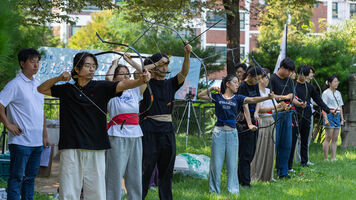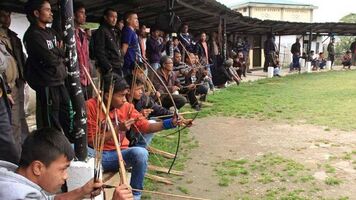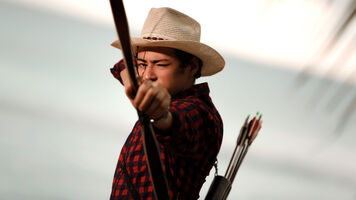Gungdo revival part 2: What is left to maximise the growth of traditional archery in Korea

With federal university organisation and youth participation at an all time high, it seems the future of Korean Traditional Archery – an ancient form of the sport also know as KTA, gungdo, or gukgung in Korean) – is well intact going forward.
However, Andrew White, a Business English professor and traditional archery club founder for Seoul’s Induk University, states more can be done to incorporate students into the traditionally recognised distance of 145 metres, which involves them shooting at the jeongs, the Korean term for private membership gungdo clubs.
“Ideally, I would like that to happen while they’re still university students, while they can still have their competitions amongst different schools.”
“Have those occur not at a university at a 30 or 50-metre distance but have those occur at the 145-metre distance.”
“That requires a lot of acceptance and support from these membership clubs to be willing to host these college clubs to come onto their premises and to have these competitions.”
It is not as simple as just rocking up to any old range though. Jeongs are accessed exclusively by members and newcomers interested in taking up the sport must be acquainted with their chosen one before even aiming an arrow.
This courting process can take up to a month before getting connected to the training and coaching system each jeong possesses for beginners, once they’ve been initiated and started to pay monthly membership dues.

Then follows the arduous, challenging task of learning how to shoot an arrow onto a target 145 metres away, involving an increased amount of technique, back tension and muscular stretching compared to Olympic archery.
Mastering the draw technique before dropping any accurate shots can take up to a further three months with the short and compact composite recurve at 40 to 50 pounds requiring significant power to reach the target, providing the archer has good physical technique and mental focus.
“As every par three on a golf course is different, and with gungdo, as a sport, the 145 metre distance from the shooting line to the target could be like on two sides of a mountain with a valley between it,” he said. “There’s a jeong on the southern coast of Jeju (Korea’s largest island) where the ocean is coming in and there’s a little cove in between and you're shooting over a bay.”
"Some of the targets are very much inclined on the side of a hill, others are declined, so there are no regulations on flatness and so for me personally, that's a great benefit, to the struggles of hitting the target.”
"Even the typical rectangular sports field facility layout presents its own challenges, such as wind considerations,” he added.
But due to the private nature of jeongs, information on joining them can be hard to come by, especially for non Koreans, which is why White has set up a Facebook group as a way for fellow and new gungdo archers to connect and share information on its unique style.
Anyone that is interested in seeing a jeong and the 145-metre shooting, White invites to his range, Surakjeong in Seoul, educating them on the sport of the body and the Confucian elements of the mind as a tour guide and long term practitioner of Korean Traditional Archery.

His enthusiasm for the traditional discipline awarded him an honorary Seoul citizenship in 2018, but White believes more can be done to encourage participation in the nine jeongs in the capital and the hundreds scattered around the rest of Korea.
“Since there is little to no ‘hard’ government support to explain and spread gungdo abroad, most knowledge is shared through ‘soft’ means, co-opting and nurturing the sport through grassroots interest and natural appeal,” explained White on the sport’s cultural promotion.
“I would actually say that there’s hardly any promotion from the government. There’s a lot of education, tours and discussion of tradition going on like what I’m doing, but in terms of the government, it’s the difference between hard and soft.”
White recognises the interest gungdo is garnering, both in Korea but especially abroad, and is more than willing to invite curious parties to his range to observe.
He firmly believes this is something “all jeongs should offer” as most are positioned on government land, often in city parks, sport centres, and along mountainous hiking trails, where passersby he says often have a "curious eye".
As strong as Korea in the Olympics have been and will most likely continue to be, it is not just because of their incredibly stringent, hard working camps.
It is a nation who’s culture is significantly intertwined with archery, whether it be for historical military reasons or a previous noble pastime.
Although we are now in 2024 where numerous other hobbies are accessible and known of thanks to the endless prism of the internet, Korean Traditional Archery’s recent rise amongst university students shows that no matter what, the bow will never leave Korea and Korea will never leave the bow.
This was Part 2 on Korean Traditional Archery. Read Part 1.





